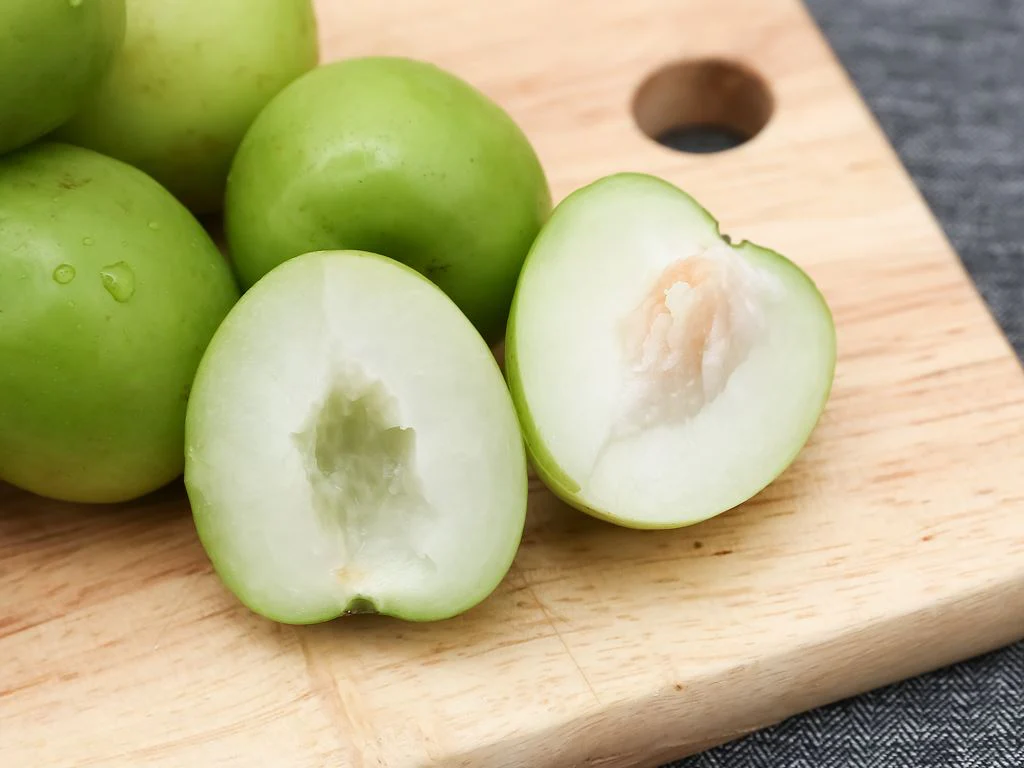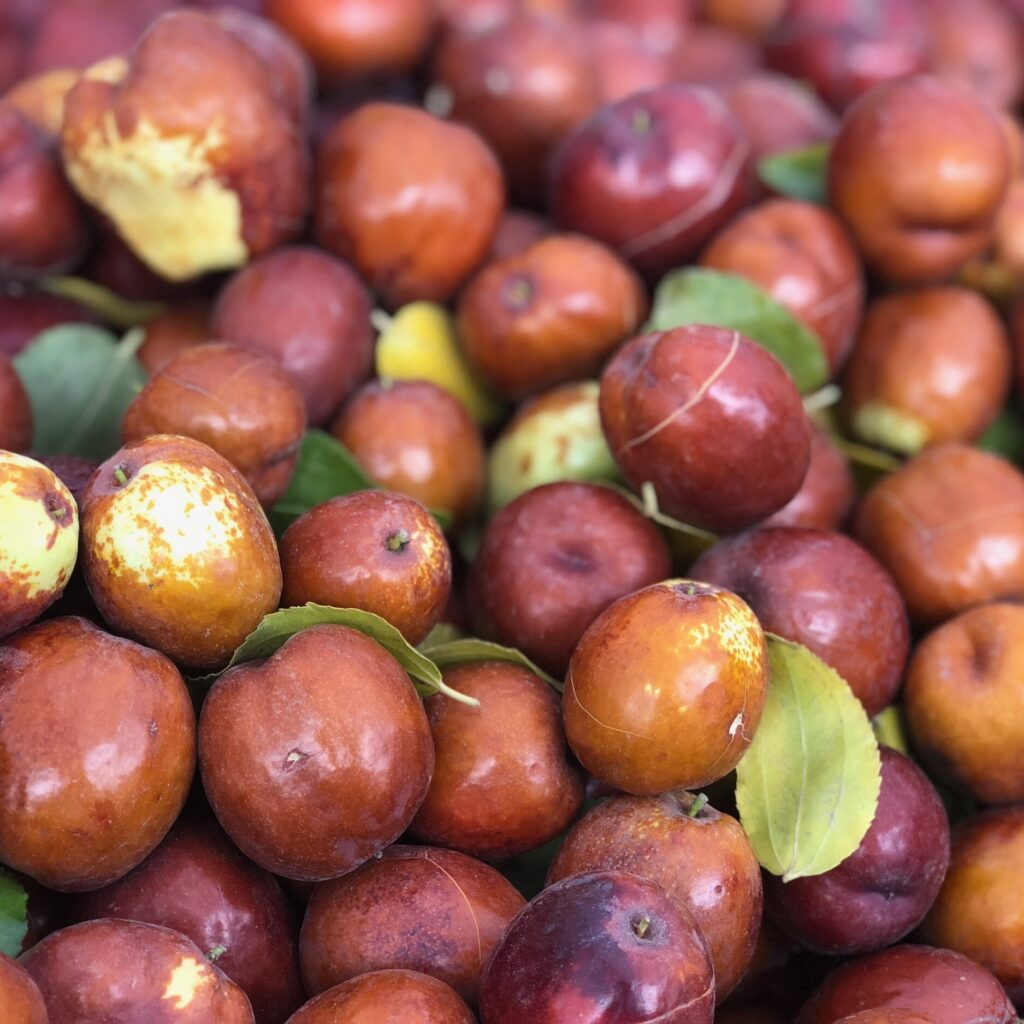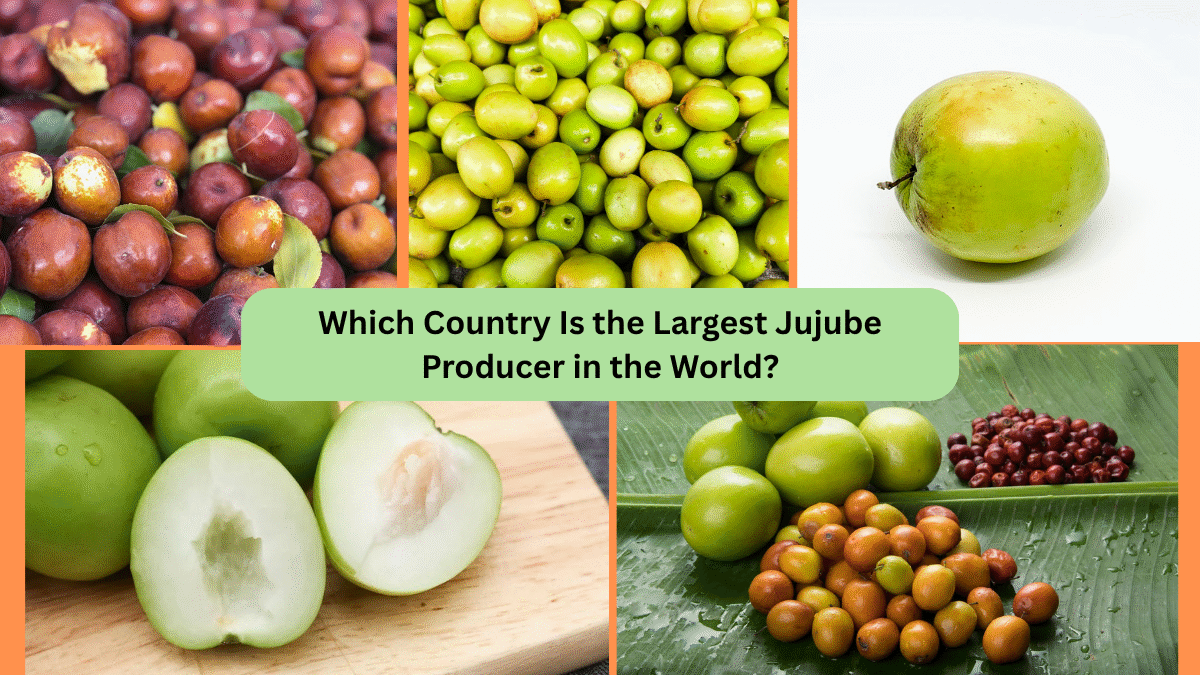The jujube—also known as the Chinese date, red date, or ber—is a small fruit with a big impact. From ancient Chinese dynasties to modern wellness markets, this humble drupe has been prized for its sweetness, versatility, and medicinal properties. But when it comes to raw production, one country towers above all others: China. Let’s explore why and how China has become the global leader in jujube cultivation.
What Is a Jujube?

Scientifically known as Ziziphus jujuba, the jujube is part of the buckthorn family (Rhamnaceae) and has been cultivated for over 3,000 years. The mature fruit is about the size of a small apple, turning red-brown when ripe. In its fresh state, it’s crisp and juicy; when dried, it becomes chewy, sweet, and date-like.
Culinary uses span fresh eating, jujube tea, candies, syrups, wines, vinegars, and even jujube powder for baking and smoothies. Medically, jujube is renowned for its vitamin C, antioxidants, calming effects, and digestive benefits—making it a prized component in Traditional Chinese Medicine (TCM).
China: Jujube’s Global Powerhouse
Production Scale and Significance
China is unmistakably the world’s top jujube producer:
- In 2020, China cultivated about 2 million hectares, yielding approximately 7.5 million tonnes pmc.ncbi.nlm.nih.gov+8pmc.ncbi.nlm.nih.gov+8pmarketresearch.com+8.
- By 2017, production had grown from 4.25 million tonnes in 2009 to 8.52 million tonnes pmarketresearch.com+1pmarketresearch.com+1.
- Over 95% of global jujube output comes from China husfarm.com+3pmc.ncbi.nlm.nih.gov+3ishs.org+3.
- With an estimated over 1.5 million hectares of orchards and $15 billion USD in annual output value, China dominates the world jujube market researchgate.net+14ishs.org+14pmc.ncbi.nlm.nih.gov+14.
Regional Production Hubs
Major jujube-growing regions include:
- Xinjiang, which produced 1.45 million tonnes in 2012 on ~47,000 ha en.wikipedia.org+15agris.fao.org+15wanatca.org.au+15.
- Traditional areas: Hebei, Henan, Shandong, Shanxi, Shaanxi, contributing more than 85% of national output pmarketresearch.com+1pmc.ncbi.nlm.nih.gov+1.
Jujube cultivation is a lifeline in these regions, supporting millions of rural households and generating jobs during harvest season.
Why China Leads

Several key drivers contribute to China’s leading position:
1. Ancient Domestication and Deep Roots
- Domesticated over 7,200 years ago in the Yellow River basin, jujube cultivation has been integral to Chinese history and farming since at least 3,000 BCE reddit.com+12pmc.ncbi.nlm.nih.gov+12wanatca.org.au+12pmarketresearch.com+2husfarm.com+2ishs.org+2en.wikipedia.org.
- Traditional techniques and cultivar selection have been refined over millennia, with more than 400 cultivars now recognized worldwide .
2. Ideal Ecological Conditions
- Jujube thrives in China’s diverse climates, from temperate to arid zones—including Xinjiang’s drylands and coastal provinces.
- The plant shows exceptional drought, heat, and saline tolerance, often used in afforestation, windbreaks, and arid farming systems .
3. Scientific Innovation & Breeding
- Since 1949, China has transitioned to modern breeding—grafting, high-density arrays, disease-resistant varieties, and mechanized orchards .
- Research continues toward: salt-resistant rootstocks, seedless edible varieties, improved yields, and processing-friendly cultivars .
4. Scaling and Industrialization
- Over 3 million hectares (2017) under jujube, with over 90% concentrated in top provinces pmc.ncbi.nlm.nih.gov+4pmarketresearch.com+4pmc.ncbi.nlm.nih.gov+4.
- A combination of smallholders and large enterprises—especially in Hebei, Shandong, Shanxi—drives both fresh and processed markets husfarm.com+6pmarketresearch.com+6pmarketresearch.com+6.
5. Diverse Market Channels
- China is the world’s leading consumer and processor of jujube.
- Shift from raw fruit to value-added products: candied fruits, slices, teas, powders, wines—these accounted for up to 13.7% of sales in 2017 agris.fao.org+15pmarketresearch.com+15pmc.ncbi.nlm.nih.gov+15.
- Domestic demand remains strong, while exports to Asia, Middle East, Europe, and North America steadily grow husfarm.com.
Global Comparison

Though China leads, other countries are important secondary producers:
India
- Cultivates Z. mauritiana (“ber”), covering ~100,000 ha with production around 600,000 tonnes en.wikipedia.org+2researchgate.net+2agris.fao.org+2.
- Grows across Maharashtra, Gujarat, Uttar Pradesh; mostly consumed locally; key cultivars include ‘Umran’, ‘Gola’, ‘Kateera’ agris.fao.org.
Pakistan, Iran, South Korea
- Smaller-scale, mainly for domestic consumption; combined output with India contributes under 10% of global figures .
United States, Australia, Europe
- Roughly scattered orchards and home gardens; the US (California) focuses on varieties like ‘Honey Jar’ and Asian cultivars .
Overall, outsiders account for less than 5% of global output.
What China’s Dominance Means

Economic Impact
- The jujube sector supports 20 million farmers and 60,000 enterprises reddit.com+2pmc.ncbi.nlm.nih.gov+2pmarketresearch.com+2.
- In Xinjiang alone, the industry employs over 10,000 farmers and generates 60,000 seasonal jobs pmc.ncbi.nlm.nih.gov.
Health and Nutrition
- Rising awareness of jujube’s antioxidants, anti-inflammatory, and immune-supporting benefits is driving steady demand in health and wellness markets .
Export & Innovation Potential
- As markets globalize and demand for superfruits increases, China is investing in R&D, processing, and international branding .
Facing Challenges Ahead
1. Climate Pressures
Droughts, frosts, and erratic weather threaten orchards—especially in Xinjiang and Central provinces .
2. Pest & Disease Threats
Historic issues like witch’s broom, mites, and fruit flies affect crop stability reddit.com+4en.wikipedia.org+4en.wikipedia.org+4.
3. Economic Constraints
Rising labor costs and volatile jujube prices are reducing farmer margins, causing some abandonment of orchards reddit.com+15pmc.ncbi.nlm.nih.gov+15husfarm.com+15.
4. Value Chain Development
While primary processing is widespread, deep processing and export infrastructure are still being scaled, leading to low value-add .
What the Future Holds

China’s jujube sector is on the rise. Key strategic areas include:
- Improved cultivars for yield, climate tolerance, and year-round supply pmarketresearch.com+3mdpi.com+3pmarketresearch.com+3ishs.org+1en.wikipedia.org+1.
- Orchard modernization: high-density planting, mechanization, integrated pest management.
- Processing innovation: expanding jujube powder, jellies, supplements.
- Export promotion: targeting health food markets in Europe, Middle East, and North America pmarketresearch.com.
China’s jujube future looks robust, with increasing commercialization, decreasing production risk, and rising global presence.
Final Answer: China Stands Unmatched
To answer the key question—which country is the largest jujube producer in the world?—it is unequivocally China. With over 95% of the global harvest, plus massive area under cultivation, deep cultural integration, and a thriving jujube economy, no other country comes close.
As consumer demand for functional foods grows and modernization continues, China is poised to not only maintain but also expand its jujube dominance—making this ancient fruit a global staple in seasons to come.





Leave A Comment